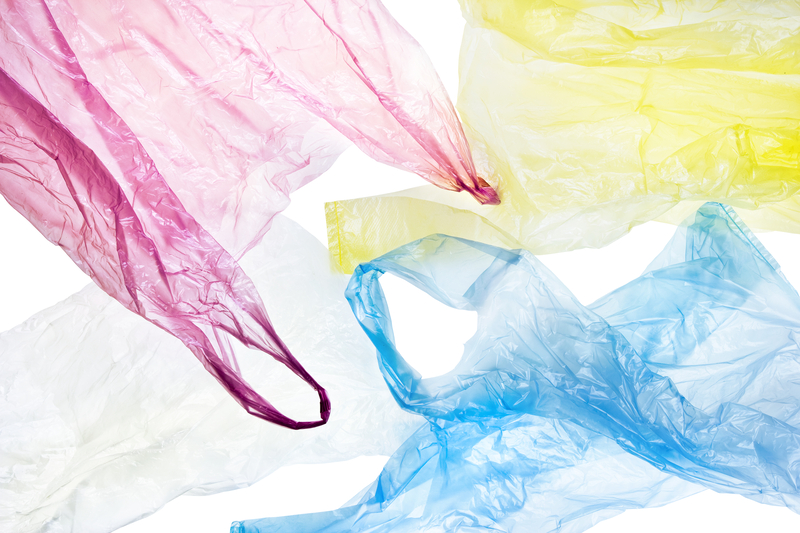Clever Ways to Prevent PPE from Polluting the Planet
The COVID-19 pandemic changed the fabric of everyday life, bringing with it the mass adoption of personal protective equipment (PPE) such as masks, gloves, face shields, and gowns. While PPE has played a crucial role in combating the spread of infectious diseases, its rise has come at a significant environmental cost. The improper disposal and management of PPE have led to increased pollution, threatening ecosystems, wildlife, and human health globally. Therefore, finding smart methods to prevent PPE pollution is more important than ever. This comprehensive article delves into innovative, practical, and eco-friendly strategies for preventing PPE from contaminating our planet.

Understanding PPE Pollution: A Growing Environmental Crisis
PPE waste primarily consists of plastics such as polypropylene, nitrile, and polyvinyl chloride. These materials are non-biodegradable and can persist in the environment for hundreds of years. As billions of PPE items are used globally each month, much of it ends up in landfills, waterways, and oceans, contributing to pollution and posing risks to wildlife. Undoubtedly, there's an urgent need to address PPE-related environmental pollution through clever and sustainable solutions.
Why Is PPE Pollution So Dangerous?
- Microplastics: When PPE breaks down, it releases microplastics into soils and waterways, infiltrating the food chain.
- Wildlife hazards: Animals can mistake masks or gloves for food, ingest them, or become entangled, resulting in injury or death.
- Human health threats: Leaching chemicals and microplastics can have long-term health implications for humans.
1. Using Reusable and Washable PPE Whenever Possible
One of the clever ways to prevent PPE from polluting the planet is by choosing reusable products over single-use options. Whenever feasible--especially outside of high-risk medical environments--opt for reusable masks and protective clothing made from materials like cotton or other washable fabrics. These can be sterilized and reused multiple times, drastically reducing waste.
Tips for Adopting Reusable PPE
- Select high-quality fabric masks with multiple layers for optimal protection and breathability.
- Wash PPE regularly with hot water and detergent.
- Buy from certified manufacturers to ensure compliance with safety standards.
*Reusable PPE not only cuts down on waste, but also saves money in the long term.*
2. Proper Segregation and Disposal of PPE Waste
Improperly discarded masks, gloves, and other personal protective items create a severe environmental burden. Establishing organized, systematic disposal methods is critical. This includes:
- Using dedicated bins for PPE waste at public places, hospitals, offices, and homes.
- Labelling disposal bins clearly to prevent contamination with general waste and improve sorting.
- Instructing the public on correct disposal procedures through signage and regular awareness campaigns.
Implementing a PPE-specific waste collection system can ensure that these items are processed safely, minimizing the risk of littering and pollution.
3. Recycling PPE Through Innovative Technologies
Traditional recycling systems often cannot process contaminated PPE waste due to health and safety risks. Nevertheless, cutting-edge recycling technologies are emerging to tackle this challenge. For instance, some companies use heat and chemical processes to sterilize and break down masks and gloves into raw materials for reuse in products like construction materials, asphalt, or even furniture.
Examples of PPE Recycling Initiatives
- TerraCycle's PPE Recycling Boxes: Collection and recycling of single-use PPE from offices and organizations.
- Eco-friendly bricks: Some researchers are mixing shredded masks into concrete to create durable building materials.
- Energy recovery: Pyrolysis and other thermal treatments convert PPE waste to energy, reducing landfill burden.
Making use of novel recycling pathways is a smart way to prevent PPE pollution and create added value from what would otherwise be waste.
4. Supporting and Using Biodegradable PPE Options
One of the most future-forward strategies to reduce PPE pollution is developing and adopting biodegradable alternatives. Forward-thinking companies are now producing masks, gloves, and gowns made from materials like polylactic acid (PLA), bamboo, or cellulose fibers that break down in composting conditions within a few months.
Benefits of Biodegradable PPE
- Decomposes quickly, leaving no toxic residue.
- Reduces landfill burden and potential for oceanic pollution.
- Lowers reliance on petroleum-based plastics.
Encouraging research, subsidies, and the procurement of biodegradable PPE can dramatically help prevent environmental pollution caused by traditional plastic-based protective gear.
5. Community Engagement and Environmental Education
Mobilizing communities and raising awareness are clever ways to prevent PPE from polluting the planet. Many people discard PPE improperly simply because they aren't aware of the consequences. By launching educational programs and clean-up initiatives, local governments and nonprofit organizations can encourage responsible behavior.
Effective Community Strategies
- Conduct workshops and webinars on sustainable PPE use and disposal practices.
- Organize litter pick-up events targeting PPE pollution hotspots, such as parks and beaches.
- Partner with schools to educate students, who can then influence their families and communities.
- Use social media campaigns to spread tips for reducing PPE waste and protecting the environment.
6. Reducing the Need for PPE in Everyday Life
While PPE is essential in medical settings, in everyday situations, physical barriers, practicing good hygiene, and maintaining physical distance can sometimes reduce the need for disposable PPE.
- Install transparent screens and shields in offices and stores.
- Promote regular hand washing over glove usage where appropriate.
- Encourage the use of contactless technologies to minimize physical interactions.
By making environments safer without excessive reliance on disposable gear, we can contribute to solving the PPE pollution crisis.
7. Government Policies and Industry Responsibility
National and municipal governments play a crucial role in managing PPE pollution. Enforcing regulations and offering incentives for companies to create sustainable PPE or take back used products can foster large-scale impact.
Policy Measures That Make a Difference
- Mandate eco-design of PPE--requiring brands to use recyclable or biodegradable materials.
- Implement take-back schemes where consumers can return used PPE for safe disposal or recycling.
- Grant tax breaks for companies investing in green PPE solutions and waste management infrastructure.
- Enforce anti-littering laws with stricter penalties for improper PPE disposal.
8. Businesses Leading by Example
Organizations and companies can set powerful examples by adopting planet-friendly PPE practices. This can range from choosing eco-certified suppliers to recycling used PPE and educating employees on environmental stewardship.
- Procure sustainable or reusable PPE for all staff.
- Establish clear PPE disposal policies and provide specially marked bins in the workplace.
- Partner with recycling firms to ensure proper processing of PPE waste.
- Share successes and challenges publicly to inspire wider change in their industry.
9. Supporting Research and Technological Innovations
Investing in research is indispensable for developing advanced solutions to the PPE pollution problem. Support for academia and startups working on new materials, recycling processes, or AI-powered sorting technologies can deliver breakthroughs for years to come.
Promising Research Areas
- New biodegradable polymers for masks and gloves.
- Efficient, safe sterilization methods for recycling contaminated PPE.
- Waste-to-energy conversion technologies for PPE disposal.
- Data analysis tools to track PPE consumption and pollution hotspots for better policy design.
How Individuals Can Reduce PPE Pollution
Everyone can play a part in tackling the PPE waste crisis. Here are some everyday strategies to prevent PPE pollution:
- Choose reusable and washable masks whenever feasible.
- Dispose of single-use PPE responsibly--never litter in public spaces.
- Educate friends and family about the environmental impact of PPE.
- Support companies and retailers who use and promote sustainable PPE.
- Participate in local clean-up drives to keep your community free from PPE litter.
*Each small action helps collectively in preserving the environment for future generations.*

Conclusion: The Urgent Need for Clever Solutions
The surge in PPE usage has created a pressing challenge for environmental sustainability. However, by deploying a range of clever ways to prevent PPE from polluting the planet, we can mitigate its adverse effects. Actions include embracing reusable and biodegradable alternatives, innovating recycling systems, improving public awareness, reforming policy, and encouraging responsible business practices. Ultimately, the journey toward a greener, healthier planet requires cooperation across governments, industries, and individuals alike.
Let's act today--choose, use, and dispose of PPE wisely to protect both personal and planetary health.
FAQ: Clever PPE Pollution Prevention
Why can't we just recycle all PPE?
Most single-use PPE is not designed for traditional recycling facilities and may be contaminated, making it unsafe to handle. Specialized processes are needed for effective and safe recycling.
Which types of PPE can be reused or washed?
Cloth face masks and some forms of protective clothing can be washed and reused. Always follow manufacturer guidelines to maintain their protective qualities.
What is the best way to dispose of PPE after use?
Dispose of single-use PPE in specially marked bins or double-bag it before placing in the trash if no dedicated system is available. Never discard PPE in nature.
How can businesses reduce PPE waste?
Businesses can switch to sustainable PPE sources, offer employee training, set up disposal and recycling systems, and partner with waste management firms specializing in PPE.
Are biodegradable masks as effective as traditional ones?
High-quality biodegradable masks can offer comparable protection if tested and certified. Always verify the performance qualities before use in high-risk environments.
For a cleaner, safer world, it's time to rethink how we produce, use, and manage personal protective equipment.
